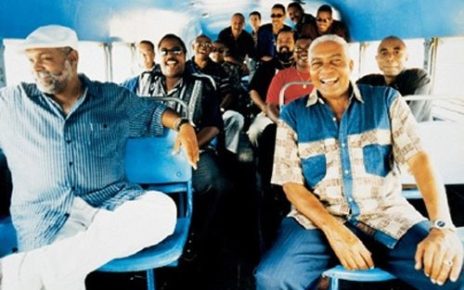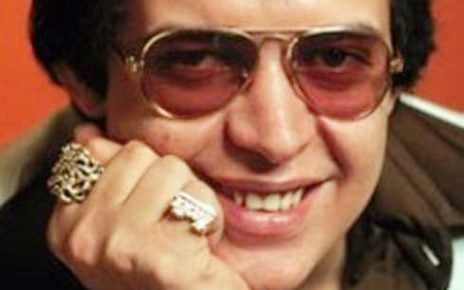| Real Name : | Ursula Hilaria Celia de la Caridad Cruz Alfonso | |
| Nickname : | Salsa Queen | |
| Born : | October 21, 1925 | |
| Birth Place : | Santos Suarez, Havana, Cuba |
Celia Cruz (born in Havana, Cuba as Úrsula Hilaria Celia de la Caridad Cruz Alfonso on October 21, 1925 — July 16, 2003) was a Cuban salsa singer, and was one of the most successful Salsa performers of the 20th century, with twenty-three gold albums to her name. She was renowned internationally as the “Queen of Salsa” as well as “La Guarachera de Cuba”.
She spent most of her career living in New Jersey, and working in the United States and several Latin American countries.
Celia Cobo of Billboard Magazine once said “Cruz is indisputably the best known and most influential female figure in the history of Cuban music.” Cruz once said in an interview “If I had a chance I wouldn’t have been singing and dancing, I would be a teacher just like my dad wanted me to be”.
Cruz was born in the diverse Santos Suárez neighborhood of La Habana, Cuba. She is the second child of fourteen children born to Catalina Alfonso and Simón Cruz. Simón worked in the railroads as a stoker, and Catalina took care of the extended family.
While growing up in Cuba’s diverse 1930s musical climate, Cruz listened to many musicians that later influenced her adult career, such as Paulina Alvarez, Fernando Collazo, Abelardo Barroso, Pablo Quevedo, Arsenio Rodriguez, and Arcaño y sus Maravillas. Celia Cruz also studied the words to Yoruba songs with colleague Mercedita Valdes (an Akpwon santeria singer) from Cuba and Celia made various recordings of this religious genre singing even back up for other female akpwons like Candita Batista.
When she was a teenager, her aunt took her and her cousin to cabarets to sing, but her father encouraged her to keep attending school, in hopes that she would become a Spanish language teacher. However, one of her teachers told her that as an entertainer she could earn in one day what most Cuban teachers earned in a month.
Cruz began singing in Havana’s radio station Radio Garcia-Serra’s popular “Hora del Té” daily broadcast, she sang the tango “Nostalgias”, (and won a cake as first place) often winning cakes and also opportunities to participate in more contests. Her first recordings were made in 1948 in Venezuela. Before that, Cruz had recorded for radio stations.
In 1950, Cruz made her first major breakthrough, after the lead singer of the Sonora Matancera, a renowned Cuban orchestra, left the group and Cruz was called to fill in. Cruz was hired permanently by the orchestra, but she wasn’t well accepted by the public at first. However, the orchestra stood by their decision, and soon Cruz became famous throughout Cuba.
During the 15 years she was a member, the band traveled all over Latin America, becoming known as “Café Con Leche” (coffee with milk). Cruz became known for her trademark shout “¡Azúcar!” (“Sugar!” in Spanish).
The catch phrase started as the punch line for a joke Cruz used to tell frequently at her concerts. Once, she ordered cafe cubano (Cuban coffee) in a restaurant in Miami. The waiter asked her if she’d like sugar, and she replied that, since he was Cuban, he should know that you can’t drink Cuban coffee without it! After having told the joke so many times, Cruz eventually dropped the joke and greeted her audience at the start of her appearances with the punch line alone. In her later years, she would use the punch line a few times, to later say: “No les digo más ‘Azúcar’, pa’ que no les dé diabetes!” which means “I won’t say ‘Sugar’ anymore so that you won’t get diabetes”.[citation needed]
With Fidel Castro’s assuming control of Cuba in 1959, Cruz and her husband, Pedro Knight, refused to return to their homeland and became citizens of the United States.
In 1966, Cruz and Tito Puente began an association that would lead to eight albums for Tico Records. The albums were not as successful as expected. However, Puente and Cruz later joined the Vaya Records label. There, she joined accomplished pianist Larry Harlow and was soon headlining a concert at New York’s Carnegie Hall.
Cruz’s 1974 album with Johnny Pacheco, Celia y Johnny, was very successful, and Cruz soon found herself in a group named the Fania All Stars, which was an ensemble of salsa musicians from every orchestra signed by the Fania label (owner of Vaya Records).
With the Fania All Stars, Cruz had the opportunity of visiting England, France, Zaire (Today’s DR Congo), and to return to tour Latin America; her performance in Zaire is included in the film Soul Power. In the late 1970s, she participated in an Eastern Air Lines commercial in Puerto Rico, singing the catchy phrase ¡Esto sí es volar! (This really is flying!).
Celia Cruz used to sing the identifying spot for WQBA radio station in Miami, formerly known as “La Cubanísima” : “I am the voice of Cuba, from this land, far away,…, I am liberty, I am WQBA, the most Cuban! (Yo soy de Cuba, la voz, desde esta tierra lejana, …, soy libertad, soy WQBA, Cubanísima!)
During the 1980s, Cruz made many tours in Latin America and Europe, doing multiple concerts and television shows wherever she went, and singing both with younger stars and stars of her own era. She began a crossover of sorts, when she participated in the 1988 Hollywood production of Salsa, alongside Robby Draco Rosa.
In 1990, Cruz won a Grammy Award for Best Tropical Latin Performance – Ray Barretto & Celia Cruz – Ritmo en el Corazon. She later recorded an anniversary album with la Sonora Matancera.
In 1992, she starred with Armand Assante and Antonio Banderas in the film The Mambo Kings. In 1994, President Bill Clinton awarded Cruz the National Medal of Arts. In 2001, she recorded a new album, on which Johnny Pacheco was one of the producers. In early 2003, she had surgery to correct knee problems that she had for a few years, and she intended to continue working indefinitely. She had weight issues.
Celia Cruz appeared on the Dionne Warwick album My Friends & Me 2006.
On July 16, 2003, she died of a cancerous brain tumor at her home in Fort Lee, New Jersey. She was survived by her husband Pedro Knight, who died February 3, 2007.
After her death in New Jersey, her body was taken to Miami to lie in state in downtown Miami’s Freedom Tower, where more than 200,000 of her South Florida fans paid their final respects. Her body was returned to New Jersey where tens of thousands of fans paid tribute to her at the funeral home. A service was held for her in St. Patrick’s Cathedral on Fifth Avenue. She was interred in a private mausoleum at the Woodlawn Cemetery in the Bronx; an epilogue in her autobiography notes that, in accordance with her wishes, Cuban soil that she had saved from a visit to Guantánamo Bay was used in her entombment.
Cruz is survived by her younger sister Gladys Becquer and her niece (Gladys’ daughter) Celia Maria Cody. From Knight’s previous marriage she has stepchildren Ernestina Knight and his children in Cuba Pedro Jr, Roberto, Emilia and Gladys. Her informal adoptive son with Knight is Luis Falcon, who began the Celia Cruz Fan Club when he was ten years old.
In February 2004, her latest album Regalo del Alma, won a posthumous award at the Premios Lo Nuestro for best Salsa release of the year. It was announced in December 2005 that a musical called “Assuca” would open in Tenerife before touring the world. The name comes from Cruz’s well-known catch phrase of “¡Azúcar!”.
On June 4, 2004, the heavily-Cuban-populated town of Union City, New Jersey, heralded its annual Cuban Day Parade by dedicating its new Celia Cruz Park at 31st Street and Bergenline Avenue, with Cruz’s widower, Pedro Knight, present. The park features a sidewalk star in Cruz’s honor, There are four other similar dedications to Cruz around the world.[9] Stars were later added to the park in honor of Tito Puente, Spanish language television news anchor Rafael Pineda, salsa pioneer Johnny Pacheco, and Benny More, merengue singer Joseíto Mateo, salsa singer La India, and Cuban musician Israel “Cachao” Lopez.
On May 18, 2005, the National Museum of American History, administered by the Smithsonian Institution and located in Washington, D.C., opened “¡Azúcar!”, an exhibit celebrating the life and music of Celia Cruz. The exhibit highlights important moments in Cruz’s life and career through photographs, personal documents, costumes, videos, and music.






